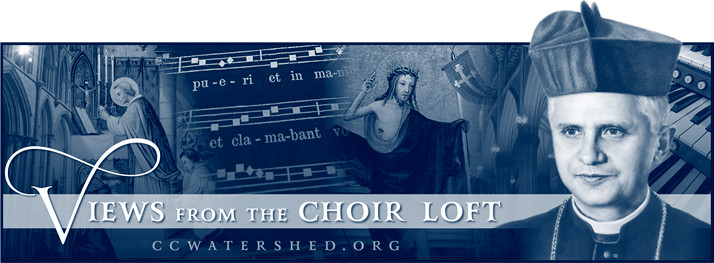 OR THE DURATION of Lent—with the exception of LAETARE SUNDAY—the pipe organ may only be used “to support the voices.” At least that’s the rule for the Missale Vetustum. Needless to say, we don’t use the pipe organ when we sing the MASS ORDINARY (which we do in classical polyphony), since we sing that a cappella. However, we do use the pipe organ rather generously to support the voices. I would argue this is important for two reasons.
OR THE DURATION of Lent—with the exception of LAETARE SUNDAY—the pipe organ may only be used “to support the voices.” At least that’s the rule for the Missale Vetustum. Needless to say, we don’t use the pipe organ when we sing the MASS ORDINARY (which we do in classical polyphony), since we sing that a cappella. However, we do use the pipe organ rather generously to support the voices. I would argue this is important for two reasons.
First Reason • First of all, removing the pipe organ does not have the impact it once did. A century ago, the pipe organ was sometimes abused during the Holy Mass. Particularly in France, famous organists would give what essentially amounted to concerts during Low Mass, and some would come listen as if they were attending a concert. (The organist would play right through Low Mass, never stopping.) How different things are today! Many Catholics have never heard the pipe organ during Mass. Indeed, when I was in charge of Masses in Texas, the young man in charge of providing music for the LIFETEEN Masses approached me and asked how I was allowed to use organ during Mass. This person never knew it was allowed (!) and had gone his entire life without ever hearing the organ at Mass! For such people, removal of the pipe organ clearly would not have same “penitential” impact as it did in former times.
Second Reason • The second reason I believe it’s helpful to use organ has to do with Holy Communion. As I have already explained (in an article which generated much controversy), the notion of the congregation receiving Holy Communion during Mass would have been quite strange to our ancestors, who were required to fast from Midnight—even from water!—if they desired to receive the SANCTISSIMUM. Holy Communion was ordinarily given outside of Mass. During the Mass itself, normally only the Celebrant received. By the way, this excerpt from a book by Father Joseph Crehan supports my position.
On the 1st Sunday of Lent, our volunteer choir sang a gorgeous hymn during the distribution of Holy Communion:
![]()
The Introit was accompanied on the organ:
![]()
The wonderful hymn tune called BRESSANI—married to a Lenten text (“Ex More Docti Mystico”)—was accompanied on the organ:
![]()
We also sang BRESSANI—with a different text for Lent (“Audi Benigne Conditor”)—without accompaniment:
![]()
Conclusion • During Lent, I don’t play any interludes. Moreover, I use ‘softer’ registration.
![]()

